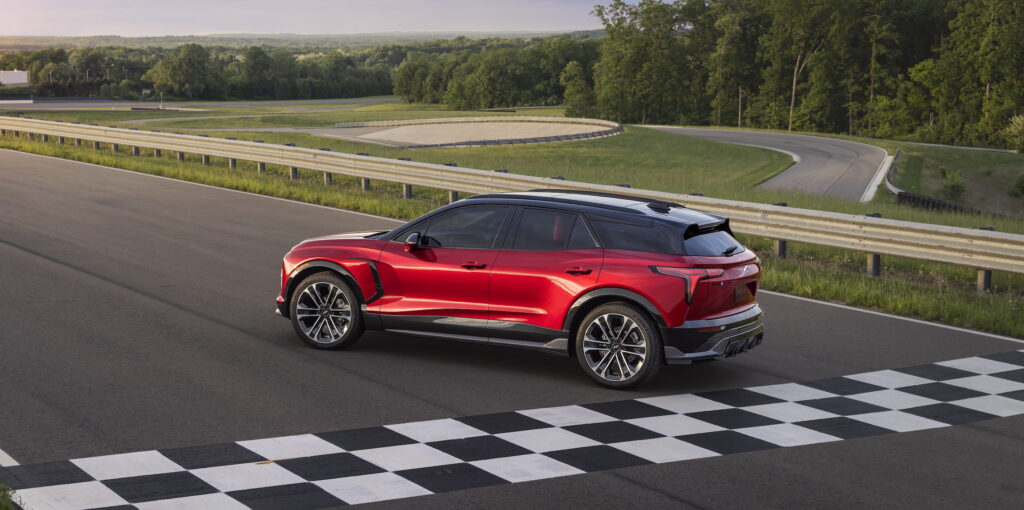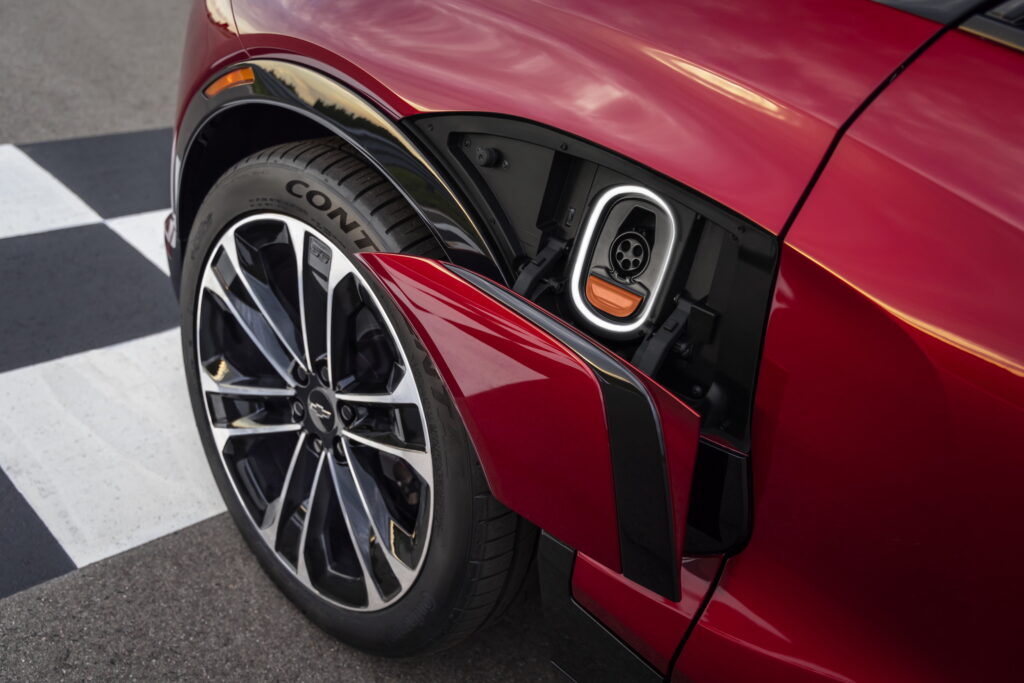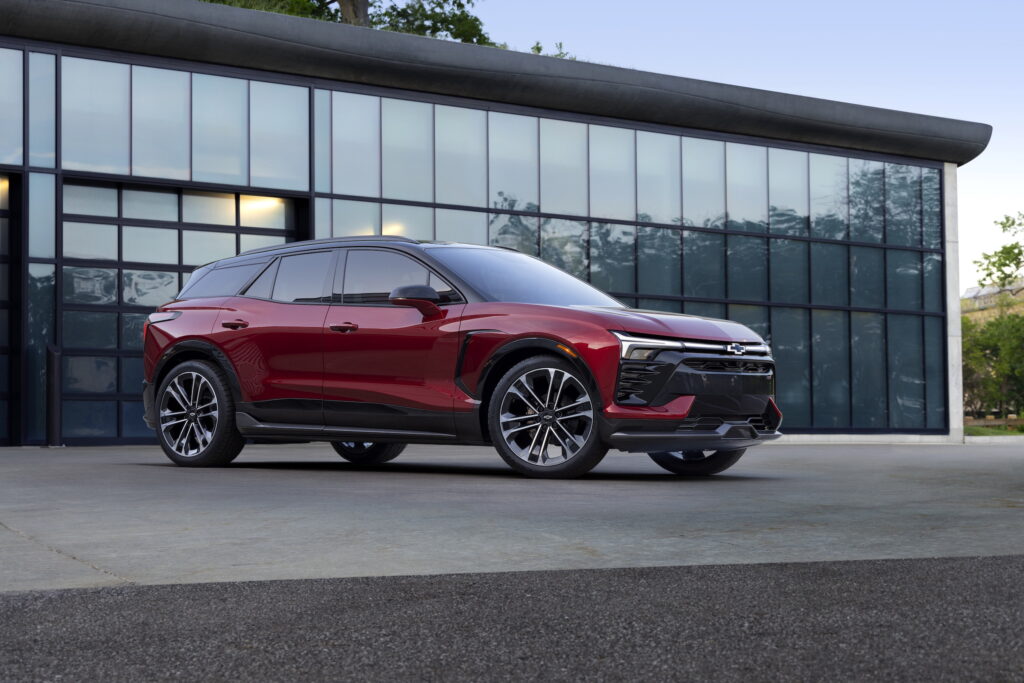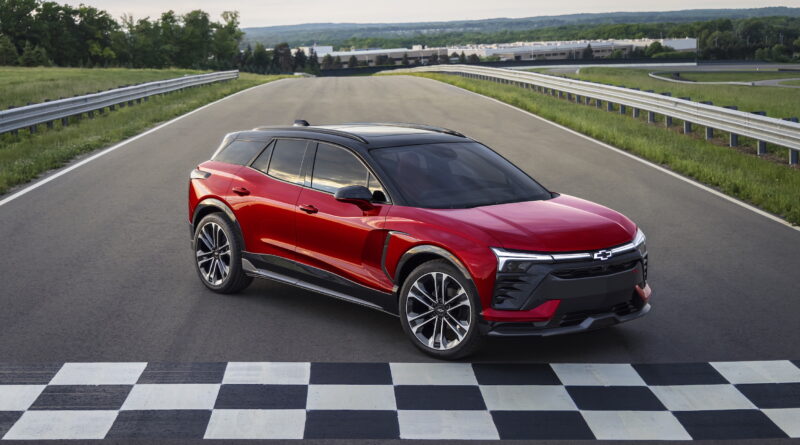Chevrolet Blazer EV is the Holden electric SUV we could have had – in FWD, RWD or AWD
Chevrolet has revealed the EV version of its Blazer family SUV, including an SS performance model and a planned version designed for use as a police pursuit vehicle.
When it goes on sale in America in mid-2023 the new Blazer EV will be the first EV available as a front-wheel drive, rear-wheel drive or all-wheel drive, giving a new level of drivetrain customisation in the electric car space.
The mid-sized crossover SUV may share its name with the garden variety Blazer sold in America – as well as some of its styling DNA – but the two are completely different vehicles.
READ MORE: Chevrolet Blazer-EP GM’s electric car eCrate conversions due soon
READ MORE: GM’s $30K Chevrolet Equinox SUV is an affordable Ultium EV
READ MORE: Holden’s EV future: What could have been
The Blazer EV sits on General Motor’s Ultium architecture that underpins the Silverado EV and Hummer EV – and is planned for dozens of future electric models across brands as diverse as Cadillac, Buick, GMC and Chevrolet.
That means it benefits from ideally locating the battery pack and electric motor/s, with a flat floor inside and maximised interior space. The wheelbase is 231mm longer than the regular Blazer to allow for the battery pack and enhance the stance.

The EV version also doesn’t share any panels with the regular Blazer, instead sporting a swoopier style with more aggressive bulges and details. In other words, it’s a completely different car with a different body, sharing only its name with the regular Blazer.
That start-from-a-clean-sheet design takes the Blazer from a more mundane looking SUV to something with added muscle and spirit.
The Chevrolet that could have been a Holden
And the Blazer EV is a car that could have one day worn a Holden badge – had the local manufacturer not stopped producing cars in 2017 before folding as a brand early in 2021.
Parent company General Motors had big plans for Holden to leverage the models coming from brands such as Chevrolet and the Blazer is the sort of car that would have worked with a Holden badge.

The Blazer EV also brings an EV first: the choice between front-, rear- and all-wheel drive configurations.
FWD, RWD and AWD for Blazer EV
Front- and rear-wheel drive versions will use a single electric motor mounted at the front or rear of the car, while the all-wheel drive models will use a dual-motor setup.
It’s unclear why Chevrolet wants to give buyers the choice of front- or rear- wheel drive setups, although it appears to be linked to how the positioning of the various model variants.
There could also be benefits with load space; a front-wheel drive model, for example, would not have a motor in the back, theoretically allowing for a deeper load area.

The Blazer will initially be offered in four model variants.
The entry-level 1LT keeps it simple with a single electric motor driving the front wheels.
The 2LT adds more features and the choice of rear motor to create an all-wheel drive setup.
The RS model gets more equipment and will be offered with all three drivetrain choices: single-motor front-wheel drive, single-motor rear-wheel drive or dual-motor all-wheel drive.
Then there’s an SS performance model (SS denoting Super Sport) which exclusively uses a dual-motor all-wheel drive system. The AWD system is also designed for towing.

That Blazer EV SS makes a whopping 415kW of power and 879Nm of torque, enough to complete the 0-60mph (96km/h) dash in less than four seconds (Chevrolet has not released power outputs or performance figures for the single-motor models).
That SS also features “Wide Open Watts”, which is a drive mode that GM developed for the Hummer EV. It allows an additional power boost.
The Blazer EV SS will form the basis for a planned PPV (police pursuit vehicle) to be available in early 2024.

The rear-wheel drive RS model is claimed to have the longest EV driving range, estimated at about 515km. The cheapest front-wheel drive will have about 400km of range while the high-performance dual-motor SS will have about 477km of range.
No word yet on battery capacities, although clearly there will be different options – something hinted at with a CGI graphic (above) in a short online promo video.
The Blazer EV will be able to charge at up to 11.5kW on an AC outlet or 190kW on a DC charger.

The charge port opens electronically and is concealed behind the left-hand front wheel.
Tech focus for Chevrolet Blazer EV
While much of the focus with the Blazer EV is on the electric drivetrain, it will also be loaded with tech inside.
It comes with an 11-inch digital instrument cluster and a 17.7-inch central infotainment screen, which comfortably outdoes the 15-inch screens in the Tesla Model 3 and Model Y.

The infotainment electronics will be powered by GM’s in-house developed software system that is marketed as Ultifi.
Ultifi has over-the-air software update capability and “will allow customers to continue to upgrade and personalise their vehicle like never before”.
Blazer EV pricing similar to Tesla Model 3
The Blazer EV is priced from about US$44,995, which is about the same price as a Tesla Model 3 (US$46,990), which in Australia sells from $65,500, or about $70K drive-away.
First deliveries in the US are planned for mid-2023.

Clearly, more highly-specified models and those with bigger battery packs and more performance will cost more, although details are yet to be revealed.
As a crossover SUV the Blazer EV is more closely aligned in principal to the Tesla Model Y that has just arrived in Australia. In the US it will also compete with the Ford Mustang Mach-E, an EV eventually expected to go on sale in Australia.
Through its GMSV (GM Specialty Vehicles) division – which sells the Silverado in Australia – General Motors is soon expected to explore Australian opportunities for EVs.

The Silverado EV would seem an obvious choice and GM is expected to confirm Cadillac will be sold in Australia some time in future.




